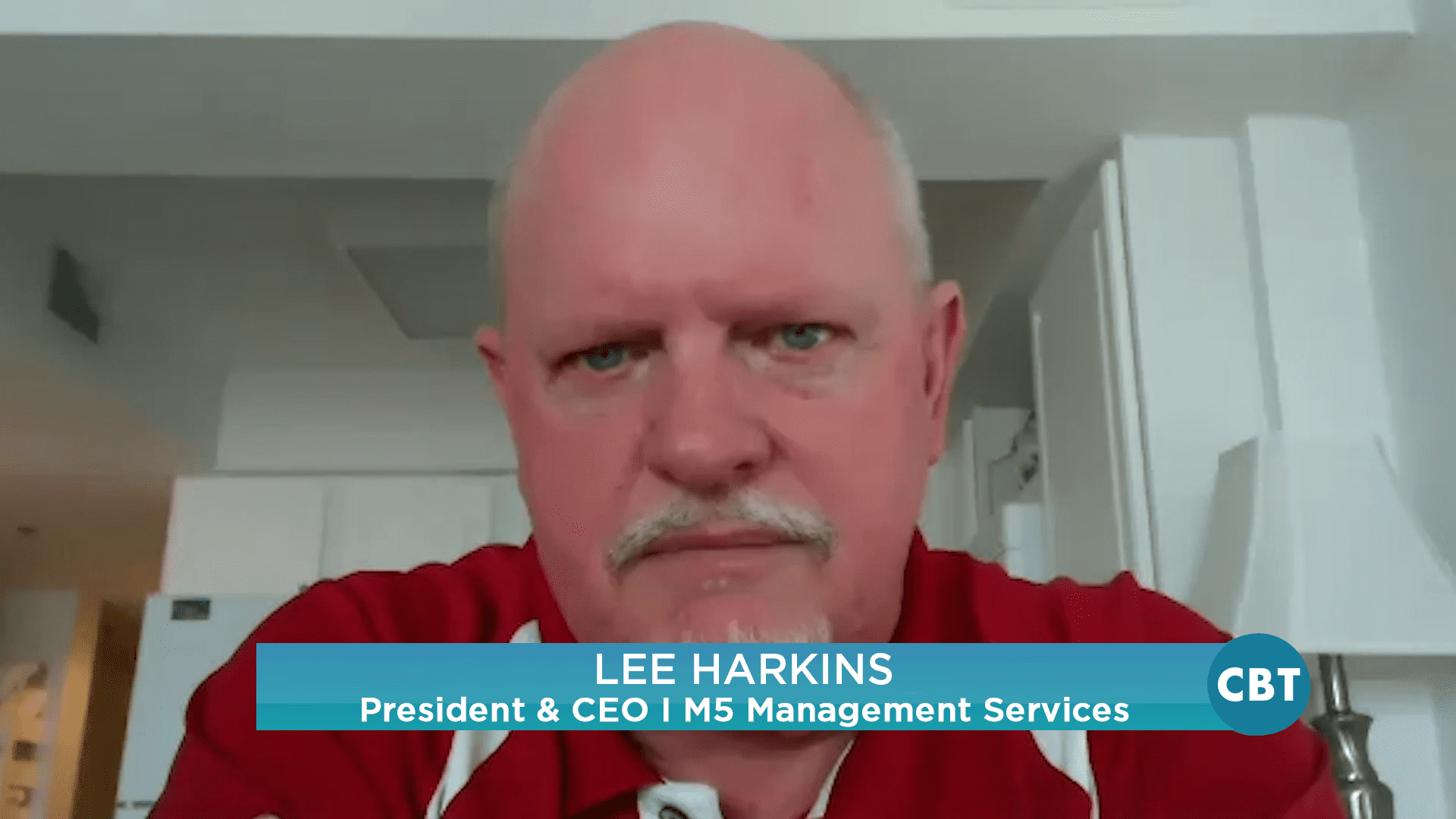According to NADA, the auto retail industry needs to fill and replace 76,000 technician jobs each year in order to offset the pace of industry growth. And with baby-boomers beginning to age out of the workforce, now is the time to invest in future students of the trade. To find out effective ways dealers can usher in the next generation and combat the tech shortage, we recently welcomed back Lee Harkins, fixed-ops expert and President and CEO of M5 Management Services.
Jim Fitzpatrick: Hi, everyone. Welcome into another edition of CBT News. We’re so happy to have with us Mr. Lee Harkin, President, and CEO of M5 Management Services. I know you know that name. Lee is a veteran of the retail automotive industry specializing in fixed ops. Lee, welcome into CBT News once again.
Lee Harkins: Thank you, Jim. I appreciate you having me.
Jim Fitzpatrick: Sure. It’s been too long. We got to see you back here at CBT News a lot more often.
Lee Harkins: Sounds good to me.
Jim Fitzpatrick: Sure, cool, cool. Let’s kind of dive right in here. As you know, NADA came out with a study recently that said the industry needs 75,000 technicians over the course of the next couple of years. That’s a staggering number. What can the industry do about that?
Lee Harkins: Well, there’s a number of things we can do. Number one is change the perception, the second most popular tool that a technician uses is a laptop.
Jim Fitzpatrick: Wow, okay. Very interesting.
Lee Harkins: What a lot of people don’t realize is that this technology that we have is so far advanced that it’s not a technician coming in and being covered in grease all day. And that’s the perception that people have about an automotive technician.
Jim Fitzpatrick: Sure.
Lee Harkins: These guys, Jim, are the smartest people in the store. There is no question in my mind. I’m with them all the time. I interview them, I talk to a lot of them. They are extremely intelligent, but they’ve got a bad rap. The bad rap was they’re a bunch of grease monkeys and that’s just not the case.
Jim Fitzpatrick: In your opinion, what’s the best way to pay technicians? I know that there’s a number of different philosophies floating around out there in the retail automotive space. But from your perspective, if it was Lee Harkins Automotive, how would you pay your technicians?
Lee Harkins: Depending on the skill level of the technician. See the part of the challenge, Jim, has been that the flat-rate pay system is under attack, but it’s not the flat-rate pay system. Commission type of pay plans have been around since Hector was a pup. It’s the application of the pay that’s the issue. Personally, I pay them all a flat rate. But see the challenge is, is that we’re not managing the production side and therefore the technician’s kind of left and a lot of managers will do a poor job of managing the production portion of it. And so the technician is kind of left there hanging with anybody looking out for them. If you’re going to put them on a commission-based pay plan, let’s go to work, man. That’s the number one thing that I see in my travel. But there’s a lot of people wanting to attack the flat-rate pay system, and it’s not the pay system, it’s the management of the pay system. That’s where the challenge is.
Jim Fitzpatrick: I could see that, I could see that. What are the pros and cons of hiring technicians outside of the automotive world and bringing them in and training them and such? Do you see dealers doing that?
Lee Harkins: Yeah, there’s a lot of people doing it. Think of it in this term: an average technician is worth $150,000 to $200,000 in gross profit to a store and on an annual basis. So if you can bring somebody in that’s talented enough to do a good job, then let’s go to work. Let’s get them in. Let’s get it set up. But a challenge that we have is we don’t typically create a career path for the technician to follow. The industry will go out and hire people from a trade school and just put them in there, and they’re left there on the lube rack thinking that’s what they’re going to do the rest of their life. They got to have a vision of where they’re going, how they’re going to get there, and what the timing and success rate of getting there.
Jim Fitzpatrick: For sure. If we’re back at Lee Harkins Automotive Group, what would you put them on, a 40-hour workweek or maybe four days at 10 hours a day, or what does that look like? What’s the optimum schedule for a technician today to keep them?
Lee Harkins: I would do all the above. We have 21 different extended hour work programs that we use. There’s an argument for people, and see our work schedule Jim, can help us hire technicians. They can [inaudible] of a five, four or three day work week. Which one would you like? We can give them all those combinations in one store. So I’ve got a plan that we work Monday through Friday, traditional eight-hour day. Then we have a group of technicians that work a four-hour day and never work a Saturday. Then we have a group of technicians that work every Saturday and Sunday. So they work a three day week, Friday, Saturday, Sunday. We have them overlapping, so there’s all kinds of neat things that we can do. What happens when I advertise to a technician, “Which work schedule would you like,” I give them options. So I wouldn’t limit myself to one option.
Jim Fitzpatrick: And I could see a technician jumping from another dealership to come to your dealership, not because of the compensation or the rate that you’re going to pay him, but because of that work/life balance schedule that you offer them.
Lee Harkins: Absolutely. I’ll tell you a quick story. I had a technician in Marlow Heights, Maryland, number one BMW technician in the world. I walk into the store, I’m interviewing the guy. I said, “What’s this number one technician stuff?” He goes, “I went to the troubleshooting competition in Germany and I won. I’ve won the troubleshooting for the world.”
Jim Fitzpatrick: Wow.
Lee Harkins: So two years later I’m doing a Toyota training session. He walks into the training session. He left the BMW store to go to the Toyota store for one reason: they had three thirteens in their store. They could eliminate a babysitter. They can [inaudible] use their own alternate or opposite schedules and they’re able to raise their kid. That’s huge.
Jim Fitzpatrick: It is huge. No question about it. So let’s switch gears a little bit. What do you think about the latest technician apprenticeship programs by Manheim and BMW? Do you think they will start seeing more of these programs trending?
Lee Harkins: Yeah, no question. Ford Motor Company’s done it for a number of years. They had a program called the ASSET, I believe is what they called it, and it’s been out there for years. Absolutely great program. You can start bringing them in. The only challenge we have is that it can’t fill the need as quickly as we need it. But it will be a help, definitely.
Jim Fitzpatrick: Yeah, for sure I could see that working, that’s for sure. What are other ways that dealers can combat the tech shortage?
Lee Harkins: Number one what I suggest to stores all the time is I ask them one simple question. “If I’m a perspective technician, why should I work for you?” They kind of look at me like I got three heads. Well, that’s the challenge because now for a technician it is a sales job to hire these people. Well, it’s no longer, “I got to manage my reputation. I got to manage the reputation I have on the street, and I can do that through a number of different ways.” But most importantly is, “Why should I go to work for you?” That’s the asset.
Lee Harkins: Now we’ll help our clients write ad. We had a client in Illinois that he wrote an ad that his service department had heated floors. Now that doesn’t sound like a big thing, but you think about a technician that’s on their feet eight hours a day, it’s cold in that part of the country and they’re standing on heated floors. Big, big opportunity for them. Air conditioning in shops are huge. But one big thing that I think that most stores should really work at doing is offer to move the technicians’ tools. Now think about that technician, Jim. He’s got a [inaudible] box out there, which to move it he’s got to get a rollback to come in, load his pull box up to move it to the other store. There’s all kinds of things like that that we can do. That’s the kind of thing that separates us and makes us [inaudible 00:09:18].
Jim Fitzpatrick: Those are all great ideas. Before I let you get out of here, and I appreciate all the time you’ve given us today, what are your thoughts on virtual service advisers and how AI is supporting service and we see more and more of that?
Lee Harkins: I love it. I really think this is going to be an opportunity. Now I don’t believe that we can completely eliminate the human interaction, but I really think that these tools, if they can perfect them and perfect them in the script that they offer to the customer, I think it’s going to be an over the top addition to our business. Because when a customer comes in, everything in our office is about convenience. I want to get out and get done now.
Jim Fitzpatrick: That’s right.
Lee Harkins: So if I’m coming in for an oil and filter change, guess what? That appeals to whatever percent of our clients. I think it’s huge. I just think it’s going to be awesome. We’ve had a number of clients that have used this type of thing in the car wash system, and the customer always upgrades themselves. So I think it’s huge. I like it.
Jim Fitzpatrick: The industry is just changing before our eyes, isn’t it? It’s a very exciting time to be in the industry.
Lee Harkins: It is exciting, very much so.
Jim Fitzpatrick: And as we see autonomous vehicles that will bring themselves in to be serviced. The two computers will talk. It’ll drive itself into the available bay. You’ll have some robot working on the vehicle.
Lee Harkins: You got the car calling the store-
Jim Fitzpatrick: That’s right.
Lee Harkins: Schedule the appointment. We’re calling the customer to say, “Hey, your car just called us and it needs a service. Come on down.”
Jim Fitzpatrick: That’s right.
Lee Harkins: I can’t wait to see it. It’s going to be a lot of fun.
Jim Fitzpatrick: “And by the way, the car complained about you as an owner, says you never wash him or take good care of him. You always leave him out in the rain.”
Lee Harkins: “Doesn’t like the way you talk to it.”
Jim Fitzpatrick: “Says you’re very angry every morning.” There may be some other issues. Well, Lee Harkins, President and CEO of M5 Management Services, thank you so much for joining us on CBT News. This is always a pleasure. And for dealers that are out there that are looking to take their fixed ops to the next level, contact Lee Harkins. You’re going to be in really good shape if you do moving into the second half of 2019 and beyond. It’s all about efficiencies and there’s one thing this guy knows, and that’s efficiency. So thanks so much, Lee. I appreciate it. Hopefully, we can have you back here soon.
Lee Harkins: Thank you Jim, anytime. I’ll be glad to help in any way I can. Thank you for having me.
CBT Automotive Network, the number one most-watched network in retail automotive. This has been a JBF Business Media Production.









